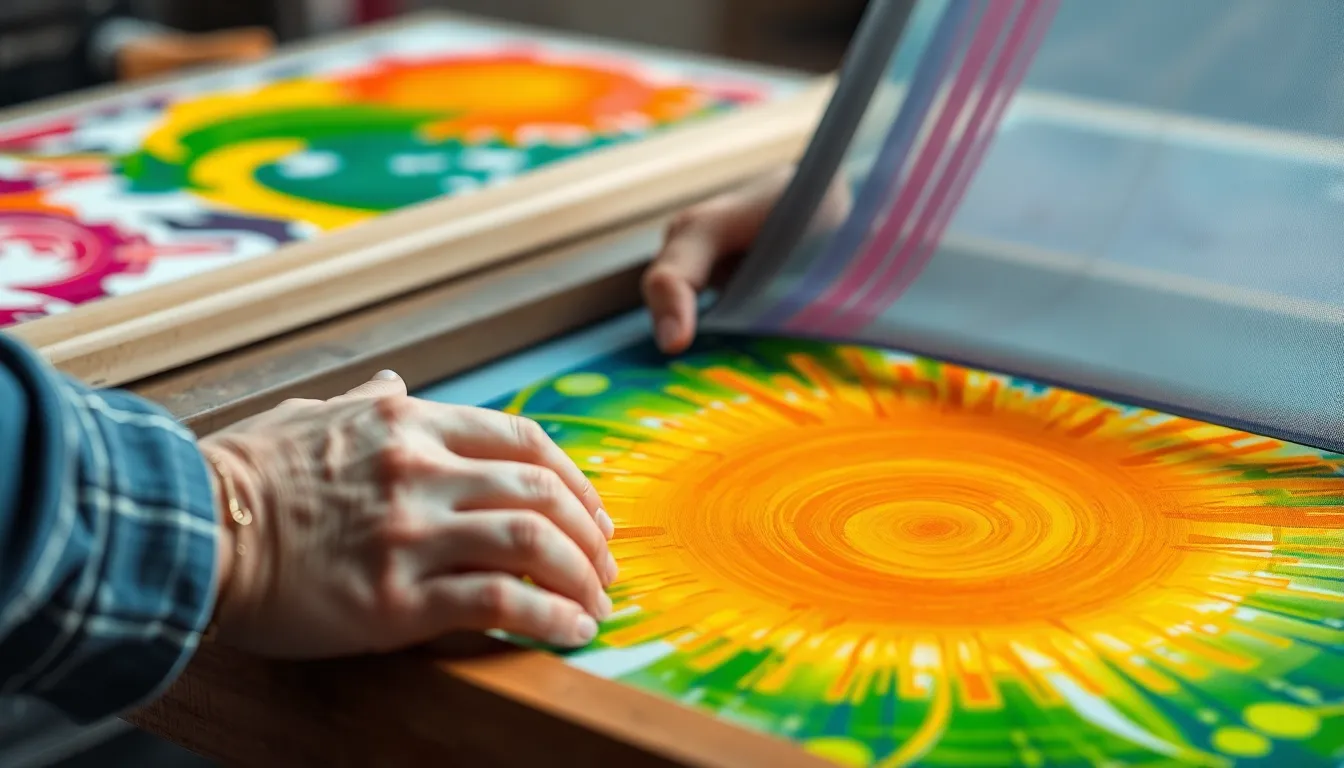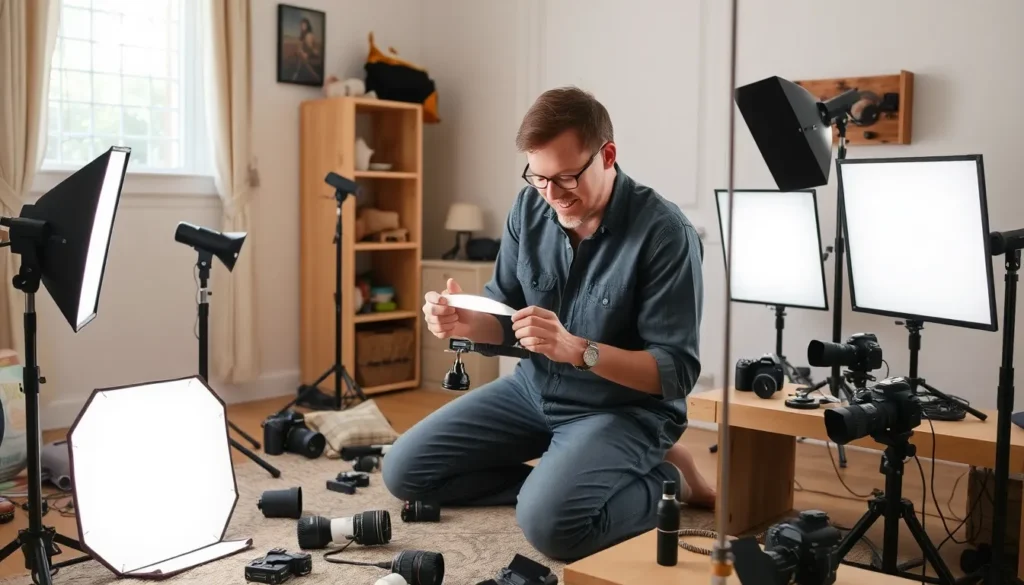Fine art prints have transformed the way art enthusiasts and collectors experience creativity. These reproductions offer a unique blend of accessibility and quality, allowing individuals to enjoy stunning artwork without breaking the bank. With advancements in printing technology, fine art prints now capture the essence of original pieces, making them a popular choice for home decor and personal collections.
From vibrant colors to intricate details, fine art prints bring life to any space. They cater to diverse tastes, whether one prefers classic masterpieces or contemporary designs. As more people seek to personalize their environments, understanding the value and significance of fine art prints becomes essential. This article delves into the world of fine art prints, exploring their benefits, types, and tips for selecting the perfect piece to enhance any collection.
Table of Contents
ToggleOverview of Fine Art Prints
Fine art prints serve as high-quality reproductions of original works, appealing to art enthusiasts and collectors alike. These prints often utilize advanced printing techniques, such as giclée, to ensure exceptional detail and vibrant colors, closely mimicking the original art pieces. This technology fosters accessibility, enabling a wider audience to experience and appreciate art without the prohibitive costs associated with original works.
Fine art prints encompass various styles, including classic works from renowned artists and contemporary pieces from emerging talents. Their versatility allows them to enhance any space, whether in a gallery context or personal home decor. Collectors benefit from the ability to curate diverse collections that reflect personal taste and style, with options ranging from landscapes and portraits to abstract designs.
Additionally, fine art prints offer an opportunity for art lovers to display meaningful work in their surroundings. With careful selection, these prints can provide emotional resonance and aesthetic appeal, contributing to an enriching atmosphere in any environment. The ongoing evolution of print technology continues to expand the possibilities within the fine art print market, ensuring these reproductions maintain relevance and importance in the art community.
Types of Fine Art Prints

Fine art prints come in various types, each offering unique characteristics and techniques. Collectors and enthusiasts can explore the following methods to find pieces that resonate with their aesthetic preferences.
Lithography
Lithography employs a flat stone or metal plate, where the artist’s design is drawn with a grease pencil. This medium relies on the principle that oil and water repel each other. After applying ink, it’s transferred onto paper, resulting in a smooth texture and fine detail. Lithographs are known for their rich tonal ranges and are often used for limited editions, making them highly sought after by collectors.
Screen Printing
Screen printing utilizes a mesh screen to transfer ink onto a surface, commonly fabric or paper. The artist designs a stencil for each color used in the print, allowing vibrant color layers to build depth. This technique excels in producing bold and graphic images, appealing to modern art lovers. The durability and versatility of screen prints make them popular for both fine art and commercial applications.
Giclée Printing
Giclée printing represents a sophisticated digital printing technology. It uses high-resolution inkjet printers to reproduce artwork with exceptional color accuracy and detail. Fine art Giclée prints typically employ archival-quality inks and heavyweight paper, ensuring longevity and vibrancy. This method allows artists to produce limited edition prints that closely resemble their original pieces, appealing to collectors seeking affordable yet high-quality art.
Benefits of Fine Art Prints
Fine art prints offer numerous advantages that appeal to art enthusiasts and collectors alike. Their affordability, accessibility, and variety in styles contribute to their increasing popularity.
Affordability
Fine art prints provide cost-effective alternatives to original artworks. While original pieces can command high prices, quality prints cater to various budgets, allowing collectors to own impressive reproductions without financial strain. Prices for giclée prints often range from $50 to $500, making art ownership achievable for a broader audience. This affordability encourages art appreciation and supports emerging artists by providing a feasible avenue for collectors to invest in their work.
Accessibility
Fine art prints enhance accessibility for individuals seeking quality art. Unlike original works, which may be difficult to acquire due to scarcity or high costs, fine art prints are widely available through online platforms and galleries. Many artists and printmakers provide options directly to consumers, ensuring that art is approachable for various demographics. This convenience allows anyone, regardless of location, to obtain beautiful art pieces that inspire and elevate their surroundings.
Diversity of Styles
Fine art prints showcase an extensive diversity of styles and techniques, appealing to a broad range of tastes. From classic lithographs and screen prints to contemporary giclée reproductions, each method offers distinct aesthetic qualities. Collectors can explore everything from abstract art to traditional landscapes, ensuring they find pieces that resonate with their personal preferences. This diversity fosters an enriching environment, enabling people to curate collections that reflect their unique artistic sensibilities.
Considerations When Buying Fine Art Prints
When purchasing fine art prints, several key factors influence the decision-making process. These considerations ensure that collectors make informed choices that align with their aesthetic preferences and investment goals.
Authenticity and Certification
Authenticity plays a crucial role in the value of fine art prints. Buyers should look for certification from the artist or a reputable gallery. Limited edition prints often come with a certificate that confirms their authenticity and details the edition size. The lower the edition number, the higher the value; for example, a print from an edition of 50 is typically more valuable than one from an edition of 500. Additionally, checking for signatures from the artist, when applicable, serves as a further validation of authenticity.
Framing and Presentation
Framing significantly impacts how a fine art print is perceived and displayed. Opt for high-quality materials that complement the artwork. UV-protective glass helps to preserve colors and prevent fading. Furthermore, choosing the right matting color enhances the visual appeal of the piece. Artwork presentation affects the overall aesthetic; for instance, modern prints often benefit from sleek, minimalist frames, while traditional prints might suit ornate framing styles. Properly framing prints not only enhances their beauty but also protects the investment.
Fine art prints offer a unique blend of accessibility and quality that enriches the lives of art enthusiasts. With advancements in printing technology, these reproductions capture the essence of original artworks while remaining affordable. They provide an opportunity for collectors to curate diverse collections that reflect personal style and taste.
The emotional resonance and aesthetic appeal of fine art prints can transform any space, making them a valuable addition to homes and galleries alike. As the market continues to evolve, the significance of fine art prints will only grow, ensuring that art appreciation remains within reach for all.



